The Divine Feminine, a.k.a. the Goddess, was worshiped for thousands of years, long before patriarchal monotheistic religions displaced her with a wrathful male god.
In virtually every ancient spiritual tradition, it is the Goddess who gives birth to the world.
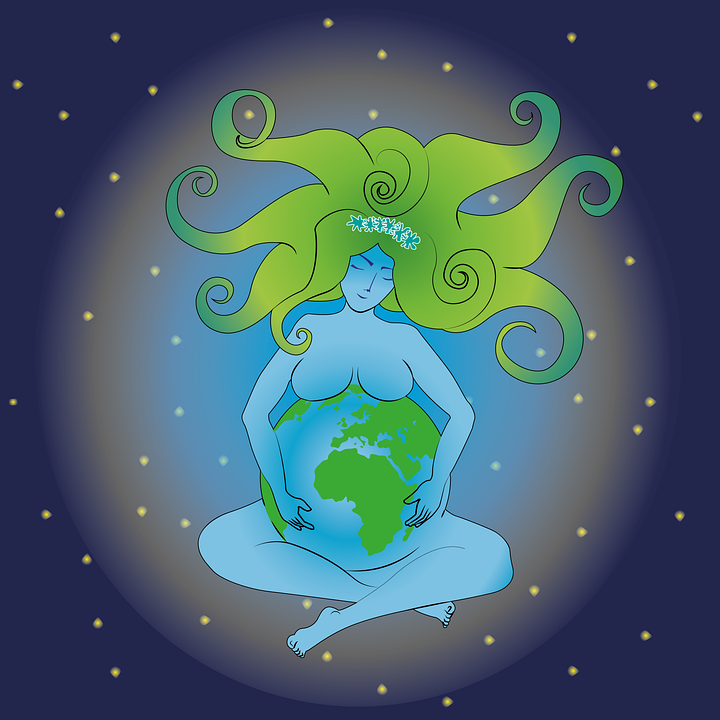
The Feminine always emerges first. Just like every fetus starts out as a female, our world emerged out of the female essence that personifies life itself.
But the Goddess isn’t a story out of ancient manuscripts, or an archaeological exhibit. She lives within each of us.
Every woman carries these 7 Goddess archetypes (or energies) inside. Some of them are more prevalent than others, but they’re all there.
Read on to learn more about the 7 ancient Goddesses who represent core Divine Feminine archetypes, and the messages they have for you.
ISIS: Alchemy
Isis, the queen of the sky, the earth, and the moon, is one of the most enigmatic goddesses in history.

(Whether or not you consider mythology historical is irrelevant; she has been a part of our collective psyche for thousands of years.)
Like any female deity, she was associated with motherhood and fertility, but her primary domains are magic and healing.
Myths About Isis
As one myth tells us, in ancient times Ra ruled Egypt with an iron fist. So Isis, using her magical powers, creates a poisonous snake that bites Ra.
Ra becomes gravely ill; in fact, he is on his deathbed. Isis tells him that she can heal him—she just needs to know his true name.
Ra’s secret name is the source of his power over life and death, but he has no other choice but to give it to her. When Isis says his name during her healing ritual, she not only magically restores Ra to health; she acquires his great knowledge and powers.
And that’s how Isis became the supreme (and deeply revered) ruler of Egypt.
Another important Isis story is the myth of the death and resurrection of Osiris.
Jealous Set kills Osiris, beloved husband (and brother) of Isis. To make sure that Isis won’t resurrect Osiris with her magic (like she did before), Set cuts the body into 14 pieces and scatters it across Egypt.
Grief-stricken Isis searches and collects all the pieces, except for the most important one (no, not the head… keep guessing). Osiris’ phallus is nowhere to be found, so Isis fashions him a new one out of wax and gold, and reassembles the body.
When Osiris comes back to life, she makes love to him and conceives a child, Horus, who later becomes the sun god.

Isis’s Divine Feminine Archetype
Isis possesses remarkable competence as a sorceress.
But it’s her ability to turn a situation around and to use any opportunity to her advantage that makes her one of the most important archetypes of empowered femininity.
More than any other ancient Egyptian goddess, Isis became a template for female deities all over the world.
At the dawn of Christianity, the worship of Virgin Mary was largely based on the ancient cult of Isis (not to mention the multiple similarities between Osiris/Horus and Jesus, but that’s another story).
Isis’s Message For You
Isis embodies the power of alchemical transformation.
As the Goddess of Magic, she teaches how to use your gifts to create the life you desire.
Isis urges you to be an agent of change in any situation. She asks you to not be afraid to use your powers of persuasion, and to stand for what you believe in. With passion and determination, you can give life to what is dead and forgotten.
With the right knowledge and a little magic (and sometimes a little trickery… wink), you can transform your dreams into reality.
KALI: Ferocity
Kali, the Hindu goddess of time, is sometimes misunderstood as the evil, bloodthirsty goddess of death and destruction.

At one time she was even worshiped by gangs of professional Indian assassins, thuggee (this is how the English word “thug” originated).
However, that’s an overly simplistic view of “Black Mother Time.” In India, all goddesses are essentially One: Devi.
Kali is one of the forms of Devi that can be most accurately described as the goddess of time, change, and transformation.
Death simply represents a transformation into a different form; that’s why Kali is often depicted dancing the dance of death.
Kali is not the bringer of blind fury, slaughter, and sorrow. In fact, she is one of the most beloved goddesses in India.
Kali destroys only what needs to be destroyed—be it a powerful demon, sin, fear, or ignorance. Once it’s all destroyed, the new creation can begin.
So Kali is the goddess of creation as much as she is the goddess of destruction.
Kali is the consort of the Lord Shiva. It is believed that Shiva is actually the destroyer; Kali is the energy (Shakti) with which he destroys. Without Kali, Shiva would be powerless.
And if the whole world ceased to exist, the only thing remaining would be Kali—timeless, formless black void of immense potential, similar to what we would call a black hole in space.
Kali’s Symbolism
Kali’s courage and ferocity when slaying demons is unmatched by any other god or goddess. She can destroy anything in the world, including the world itself.
That is why her worshipers believe that when Kali is honored and understood, she can destroy all their fears and illusions.
As such, Kali is associated with Kundalini energy that frees the soul from worldly attachments.
Kali’s Message For You
Fear is your worst enemy.
Fear engulfs you, paralyzes you. It’s that sick feeling in the back of your throat. So many of your dreams are left to rot in the gutter because of fear.
When dealing with overwhelming, persistent fears, call on Kali to give you the courage to defeat them. Ask to be able to see fear for what it really is—an illusion.
Kali is a very powerful goddess. Just repeating her name will give you the strength to take that next step, or to let go of what doesn’t serve you.
HATHOR: Motherhood
Hathor is one of the most ancient goddesses in the world. She personifies love, joy, music, dance, motherhood, and fertility.
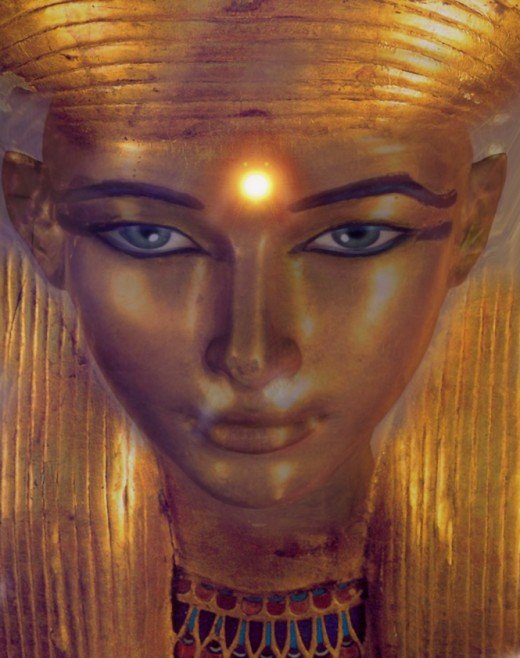
Later on, Hathor became identified with other ancient Egyptian goddesses of motherhood and fertility—Bat and Isis.
Hathor was worshiped by priests of both sexes who were also dancers, musicians, and other entertainers.
Her cult was centered in the Temple of Hathor in Dendera, Upper Egypt, and it pre-dates recorded history. The temple is still one of the best-preserved temples in Egypt.

Hathor’s Divine Feminine Archetype
Although Hathor has many roles, she primarily personifies the archetype of the Mother.
The Mother archetype is particularly old since mothers are ubiquitous to every culture.
In Western culture, we have many symbols of the Mother—from Mary, the mother of Christ, to “Mother Earth.”
Carl Jung said that those who didn’t get to experience unconditional maternal love often seek comfort in patriotism or religiosity.
Hathor’s Message For You
The Mother is a very powerful figure. Without that nurturing, patient, loving force, life would be impossible.
But the Mother can also be abusive, manipulative, and overprotective. So keep your inner Mother in check! Give your children the freedom to make their own choices and offer them support when they need it.
If you’re not a mother, know that you don’t have to have children to have the Mother archetype in you.
Nurture your inner child as you would the most precious beautiful baby. Nurture your dreams, your aspirations, your creative projects. Give the gift of forgiveness or unconditional love to someone who needs it.
And when you feel weary and depleted, allow other people to care for you without feeling dis-empowered.
ARTEMIS (DIANA): Independence
Artemis is one of the three Greek virgin Goddesses (the other two are Hestia and Athena). The word “virgin” in this context means a “young maiden,” “unmarried woman,” or “beholden to no man.”
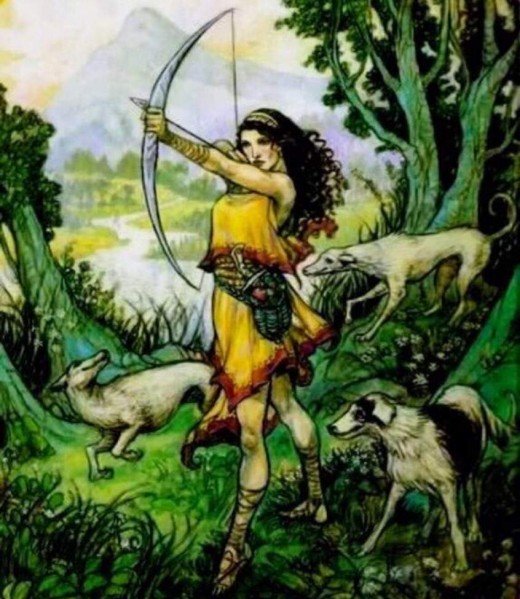
This is a perfect description of an independent Artemis—“beholden to no man.” You can say she was the first feminist.
Artemis rules over the moon, the hunt, wilderness, and childbirth. She is fearless, strong, athletic, adventurous, youthful and quick-tempered. In one myth, a man saw her naked, so she had him torn to pieces by her hunting dogs.
Artemis’s Divine Feminine Archetype
Artemis is your typical “tomboy.” As the most androgynous Goddess archetype, she is fiercely competitive and is not exactly the “marriage material.” She may have lovers, but she can never belong to any man.
Her other personas include the Artist, the “Bad Girl,” the Amazon Warrior Woman, the Free Spirit, and the Nature Lover.
If you’ve recognized Artemis in yourself, you must be a firecracker! You also have strong protective instincts. That’s why modern Artemises are drawn to environmentalism, animal and human rights, and especially women’s rights.
They are passionately concerned with the victimization of women and girls, and they can be rather merciless when bringing justice upon the abusers.
Artemis’s Message For You
One of the most important lessons of your life is to develop compassion for all beings, and to be able to relate to others in a deeper way.
You may feel like all you need is your bow and arrows to roam free in the wilderness of life. But don’t confuse inter-dependence with co-dependence! Connecting to others makes us stronger, not weaker.
Indulge your instincts and enjoy your freedom.
But also keep an open mind about what else life can offer. Strong will and self-confidence are excellent assets, but sometimes they can make you stubborn and inflexible. There’s more than one point of view.
INANNA (ISHTAR, ASTARTE): Sensuality
Known as Inanna to Sumerians, Ishtar to Babylonians, and Astarte to Phoenicians, this goddess ruled over love, fertility, and war.
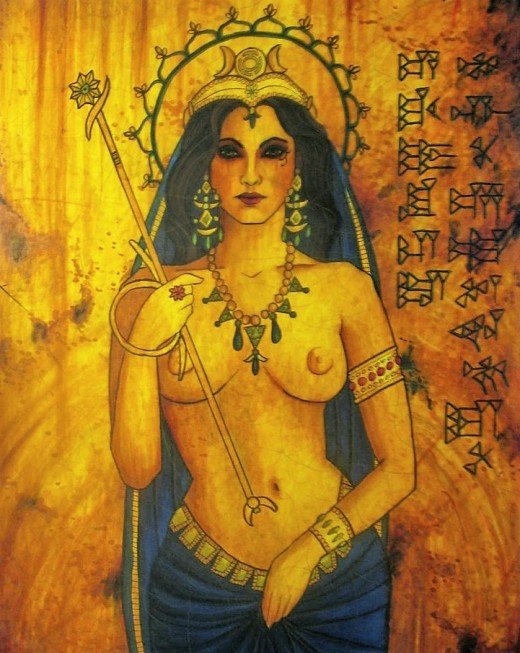
At the Sumerian New Year, couples performed rites to ask Inanna to bless them with children.
Inanna’s Divine Feminine Archetype
As an archetype, Inanna (or Ishtar) symbolizes a powerful seductress who uses her considerable female wiles to her advantage.
In some interpretations (Caroline Myss), Inanna is an archetype of a Prostitute, and historically acts of sacred prostitution were performed in her honor.
In Jewish mythology, she is referred to as Ashtoreth, a female demon of lust.
But it would be a mistake to define Ishtar as a one-dimensional character.
As the Queen of Heaven and Earth, she embodies the Divine Feminine in all its splendor: a sensuous courtesan and a timid virgin, a life-giving mother and an eternal child, merciful and wicked, wild, passionate, untamed.
In other words, everything (with the exception of the mother) patriarchy aimed to demonize and destroy.
Inanna’s Message For You
Sensuality is a gift, but it can also be a powerful weapon.
When you trade on it or use it to control others, you give away a part of yourself. On another level, it’s a symptom of deep self-esteem issues and subconscious fears. Find the power, the beauty, and the love within.
If you struggle with sexual fears and inhibitions, invoke my name to initiate a personal transformation that will unlock your inner Ishtar.
You have almost untapped reservoirs of creativity and sexuality within you. So don’t be afraid to indulge your sensual side and discover your body’s pleasure points. It’s healthy and fun!
PERSEPHONE (KORE): Introspection
Persephone is the Greek goddess of the Underworld, the abode of the dead. She didn’t take on that role willingly though.

As a young girl, she was abducted by her uncle Hades, the ruler of the Underworld, who raped her and made her his wife.
Nonetheless, she became a magnificent and powerful queen who acted as a guide to the souls who entered the world of the dead.
Persephone’s Divine Feminine Archetype
Persephone represents a female archetype of a medium, a mystic, a shamaness.
She is intense, imaginative, poetic, sensitive, keenly perceptive, and often psychic.
She is very attached to her mother (Demeter), and only maintains a few significant relationships.
Like any introvert, she shuns crowds and superficiality. Her kingdom is the inner world of the psyche—the “Underworld,” representing the subconscious.
Like no other Divine Feminine archetype described here, Persephone represents the importance of introspection and knowing thyself.
As the maiden aspect of the Goddess archetype (the Maiden, the Mother, the Crone), Persephone also personifies someone inherently pure and incorruptible. Someone who can live amidst darkness but not absorb it.
Persephone’s Message For You
Your light shines wherever you go. Your connection to the world of spirit is unshakable.
But you cannot see yourself clearly, and you can be a little immature. So your task is recognizing your own darkness, and maturing into the Mother, and then the Crone.
Some challenges you may be dealing with are overcoming the effects of past trauma (abuse, victimhood), taking responsibility for your life and acknowledging your own inner Underworld.
This is your “dark side” that contains repressed thoughts and emotions like anger, rage, guilt, self-pity, fear, powerlessness, etc.
Everyone has a dark side, without exception. Only by uniting the light and the dark aspects of herself can the Goddess become truly empowered.
KWAN YIN (QUAN YIN, TARA, AVALOKITESHVARA): Compassion
Kwan Yin is a Buddhist goddess of mercy, compassion, and healing.
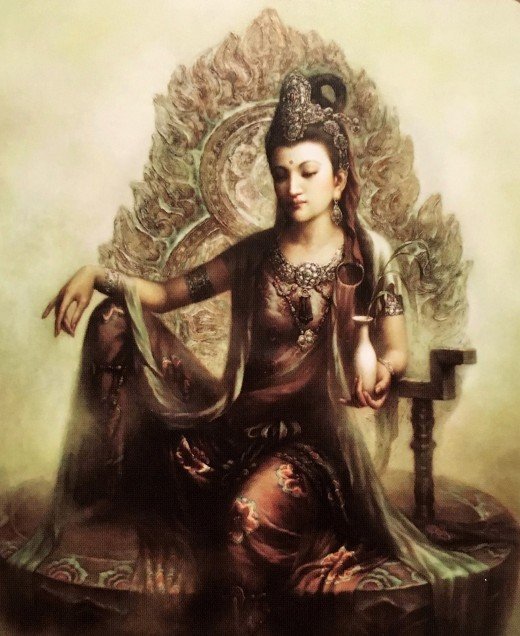
Myths About Kwan Yin
According to some sources, Kwan Yin was born a man. But she was so pure, gentle and compassionate, that with time her male gender disappeared, and people started thinking of her as a female deity.
Another story says that she was born a man in her previous lifetime in India, where she was known as Avalokiteshvara, “the lord who looks upon the world with compassion.”
And some people believe she was both male and female. But in the end, it doesn’t really matter.
The legend has it that in her next life in China, Kwan Yin was a daughter of a rich, evil man. When it’s time for her to get married, her father chooses her a husband—another rich, evil man.
But Kwan Yin wants to be a nun. Reluctantly, her father lets her go live in a monastery, but makes sure the monks give her the hardest chores. Since she grew up in luxury, he’s hoping that life as a nun will be too rough for her, and eventually she will change her mind.
But ascetic lifestyle doesn’t scare Kwan Yin. She’s happy to spend her days praying and helping around the monastery. So when his plan fails, the father decides to kill Kwan Yin.
It is said that when Kwan Yin’s spirit left her lifeless body and was about to go to heaven, she heard the cries of all the suffering souls on earth.
Kwan Yin’s compassion was so great that she chose to give up nirvana and vowed to devote her whole existence to alleviating human suffering. She’s been incarnating in different forms all around the world ever since, comforting people in their darkest hour.
Kwan Yin’s Message For You
Kwan Yin is one of the most approachable goddesses. According to Buddhist scriptures, anyone can invoke Kwan Yin by simply calling her name.
If you feel you are in the most hopeless situation, she can relieve your suffering through her divine mercy.
Another way to invoke Kwan Yin is by using the mantra “Om Mani Padme Hum.”
Kwan Yin can also help you to cultivate compassion in yourself, balance your karma, and project loving kindness onto the world.
When you feel anger rising up, and those unkind words are about to come out of your mouth, ask Kwan Yin to send you some love. Then pass it on.
That’s Kwan Yin’s message to you: the best way to feel empowered is to be kind to others, and to always always always be kind to yourself.
Which Divine Feminine archetype are you?





